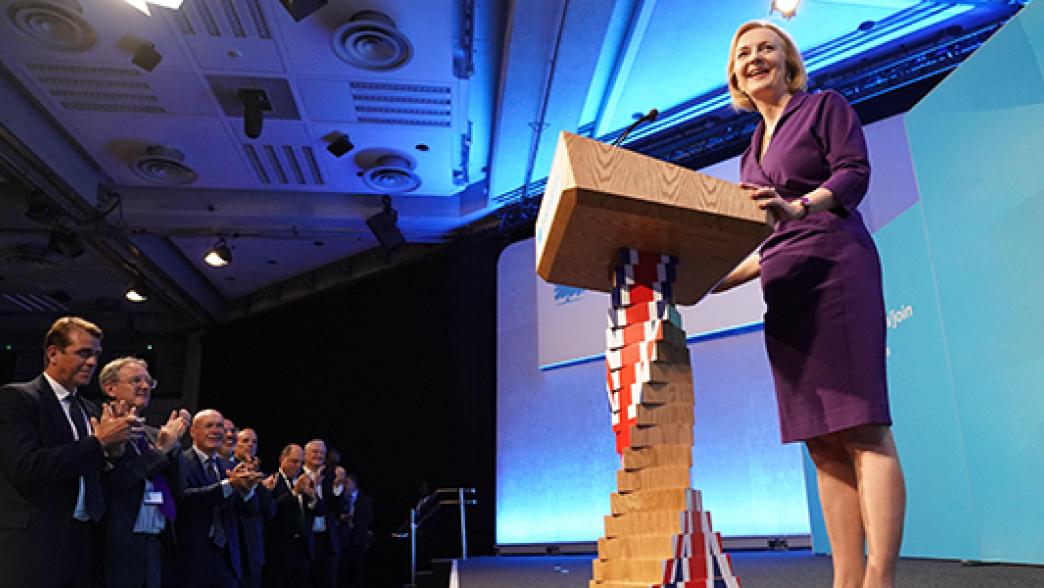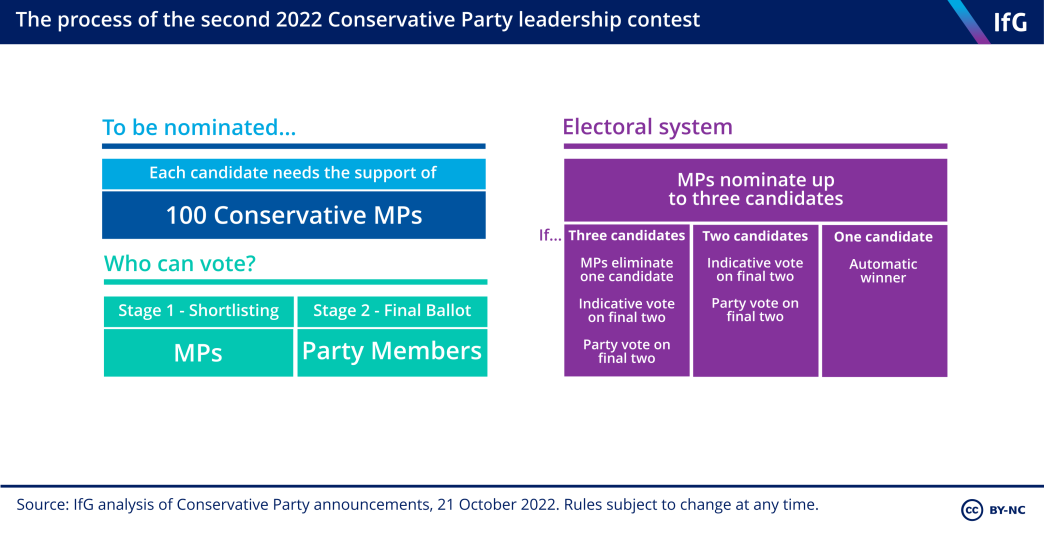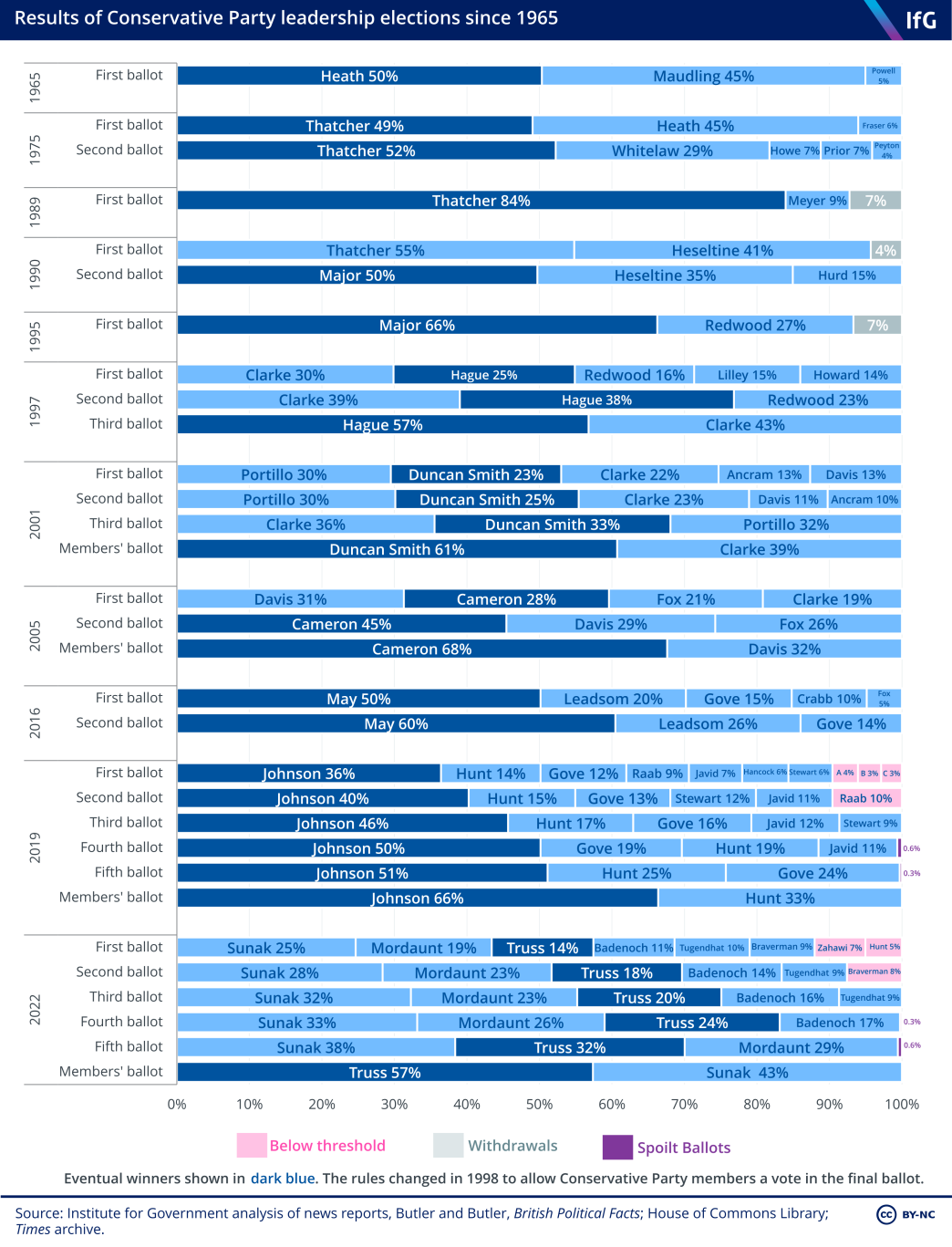
On 20 October 2022, Liz Truss announced that she would step down as leader of the Conservative Party. She will remain as prime minister until a successor is elected.
How will the election of the new Conservative leader work?
In her resignation speech, Liz Truss announced that a new leader would be elected within a week. Sir Graham Brady MP, the chair of the 1922 Committee of backbench MPs, and Conservative Party chair Jake Berry later announced that candidates would need to receive at least 100 nominations by MPs before 2pm on Monday 24 October to reach the first round of the contest.
If three candidates receive 100 nominations, Conservative MPs will vote on Monday to eliminate one candidate. Unusually, they will also take part in a non-binding, indicative vote on the final two candidates. Party members will then be given the opportunity to choose between the two final candidates, with online voting closing on Friday 28 October.
If two candidates receive 100 nominations, Conservative MPs will take part in a non-binding, indicative vote on Monday, followed by the members’ vote closing on 28 October.
If only one candidate receives the required 100 nominations, they will be named leader of the Conservative Party on 24 October.

Who decides how the leader is elected?
The Conservative Party Constitution requires that candidates for leader are presented to the party membership. The candidate who receives 50% of the vote of the membership is declared leader. These rules can only be changed by a ballot of the party’s Constitutional College, a process which takes at least 28 days. [1]
The 1922 Committee of backbench Conservative MPs is responsible for deciding how candidates are selected to face the membership, in consultation with the Party Board. These rules are not publicly available and are announced by the chair of the 1922 Committee at the beginning of each contest. In recent years, successive ballots of MPs have been held, with candidates required to reach a certain threshold of support to progress to each following round.
If only one candidate is nominated, they are automatically declared leader. This has happened only once, in 2003, when Michael Howard was elected. Such a declaration may be subject to a ratification vote by the membership.
The party constitution does not dictate what should happen if one candidate drops out of the race during the membership vote. However, when Andrea Leadsom dropped out of the race during the party vote in 2016, Theresa May was declared leader.
How is this election different to recent Conservative leadership elections?
Though the basic rules remain the same, this election will take place over a much briefer window than recent Conservative leadership contests.
The summer 2022 Conservative Party leadership election took place over a two month period, from 12 July to 5 September. In that election, several rounds of MPs ballots were held over the course of one week to determine the two candidates who would face the membership. The membership then voted over six weeks to choose the new leader. In this autumn contest, MPs have four days to choose candidates and – if required – party members will have four days to decide a winner.
Another unusual element of this contest is the indicative vote, which will take place on Monday if at least two candidates are nominated. This will give Conservative MPs the opportunity to demonstrate which of the final two candidates have the support of the parliamentary party. This may encourage party members to vote for the candidate who can command the most support in the Commons. It has also been suggested that the second-placed candidate may be encouraged to drop out of the contest, thereby avoiding a members’ vote. [2]
How were the rules different in the past?
The current rules were introduced in 1998 by William Hague after the Conservatives’ landslide loss in the 1997 General Election. [3]
Prior to this, Conservative leaders were elected exclusively by Conservative MPs. The winning candidate had to obtain more than 50% of votes and finish at least 15% ahead of the second-placed candidate. If no candidate reached this threshold in the first ballot, a second ballot would be held in which the winner was only required to win 50% of MPs’ votes. Further ballots could then be held under the same rules if necessary.
Under these rules, the candidates in the second round were not required to have stood in the first ballot. John Major was elected Conservative leader in 1990 in the second ballot, having supported Michael Heseltine in the first ballot.
Elections for Conservative Party leader were introduced in 1965. Before then, the leader ‘emerged’ from discussions among MPs.
